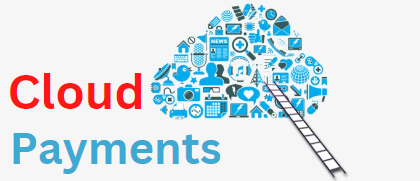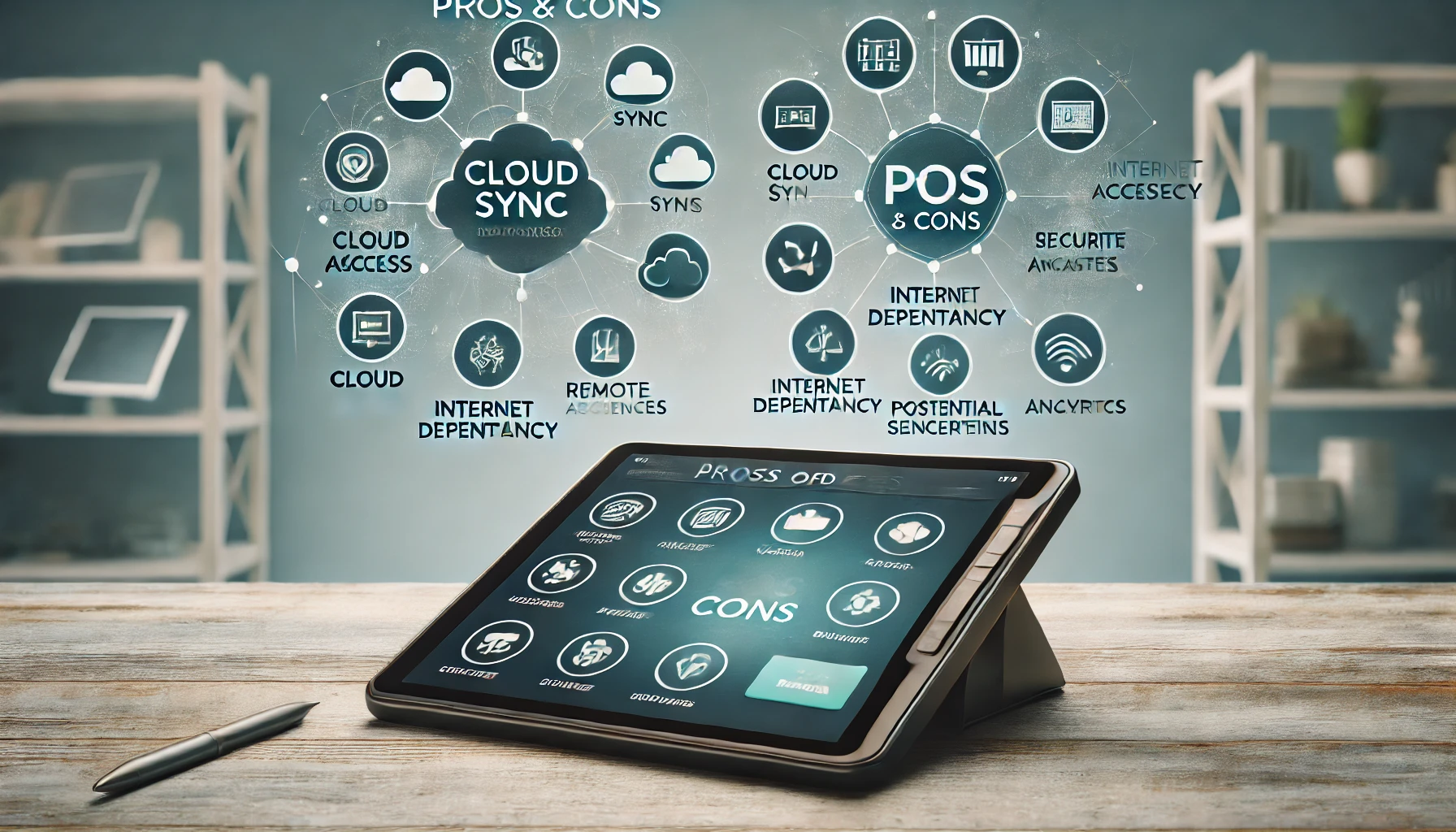How to Use Cloud Payments for B2B Transactions
In today’s digital age, businesses are constantly seeking ways to streamline their operations and improve efficiency. One area that has seen significant advancements is payment processing, particularly in the realm of B2B transactions. Cloud payments have emerged as a game-changer, offering businesses a secure and convenient way to handle their financial transactions.
In this comprehensive guide, we will delve into the world of cloud payments for B2B transactions, exploring the benefits, choosing the right provider, setting up the system, integrating with existing systems, ensuring security and compliance, optimizing efficiency and cost savings, overcoming challenges, and addressing common pitfalls. Let’s dive in!
Understanding the Benefits of Cloud Payments in B2B Transactions
Cloud payments offer numerous benefits for businesses engaged in B2B transactions. One of the key advantages is the ability to streamline the payment process. With cloud payments, businesses can automate their payment workflows, reducing manual intervention and saving valuable time. This automation leads to faster payment processing, enabling businesses to improve cash flow and enhance their overall financial management.
Another significant benefit of cloud payments is the increased accessibility and flexibility they provide. With cloud-based systems, businesses can access their payment data from anywhere, at any time, using any device with an internet connection. This accessibility allows for greater collaboration and real-time visibility into payment status, facilitating better decision-making and improving overall business agility.
Cloud payments also offer enhanced security measures compared to traditional payment methods. Reputable cloud payment providers employ robust encryption techniques and adhere to stringent security standards, ensuring that sensitive payment data is protected from unauthorized access. This level of security provides peace of mind for businesses and their customers, reducing the risk of data breaches and fraud.
Choosing the Right Cloud Payment Provider for Your Business
Selecting the right cloud payment provider is crucial for the success of your B2B transactions. When evaluating potential providers, there are several factors to consider. Firstly, ensure that the provider offers a comprehensive suite of payment solutions that align with your business needs. This may include features such as invoicing, recurring payments, payment gateways, and integration capabilities with your existing systems.
Secondly, consider the provider’s reputation and track record. Look for testimonials and case studies from other businesses in your industry to gauge their level of customer satisfaction. Additionally, check if the provider has certifications and compliance with industry standards, such as PCI DSS (Payment Card Industry Data Security Standard), to ensure that they adhere to the highest security standards.
Furthermore, evaluate the provider’s pricing structure and fees. Compare the costs of different providers and consider factors such as transaction fees, monthly subscriptions, and any additional charges for value-added services. It is essential to strike a balance between cost-effectiveness and the level of service and features provided.
Setting Up Your Cloud Payment System: Step-by-Step Guide
Once you have chosen a cloud payment provider, it is time to set up your system. Here is a step-by-step guide to help you navigate through the process:
- Assess your current payment processes: Before implementing a cloud payment system, evaluate your existing payment processes and identify areas that need improvement. This will help you determine the specific features and functionalities you require from your cloud payment solution.
- Gather necessary information: Collect all the relevant information required for setting up your cloud payment system. This may include your business details, bank account information, tax identification numbers, and any other documentation requested by the payment provider.
- Configure your payment settings: Once you have gathered the necessary information, log in to your cloud payment provider’s portal and configure your payment settings. This may involve setting up payment methods, currencies, and payment terms that align with your business requirements.
- Customize your payment templates: Most cloud payment providers offer customizable payment templates that allow you to brand your invoices and payment pages. Take advantage of these features to create a professional and consistent payment experience for your customers.
- Integrate with your accounting system: If you already have an accounting system in place, ensure that it integrates seamlessly with your cloud payment solution. This integration will enable automatic synchronization of payment data, eliminating the need for manual data entry and reducing the risk of errors.
- Test your payment system: Before going live, thoroughly test your payment system to ensure that everything is functioning as expected. Process test transactions, verify that payment notifications are being sent correctly, and check if the funds are being deposited into the correct bank accounts.
- Train your staff: Once your payment system is up and running, provide training to your staff on how to use the system effectively. This will ensure that everyone is familiar with the payment processes and can assist customers or resolve any issues that may arise.
Integrating Cloud Payments with Your Existing B2B Systems
Integrating cloud payments with your existing B2B systems is crucial for seamless operations and efficient financial management. By integrating your cloud payment solution with your ERP (Enterprise Resource Planning) or CRM (Customer Relationship Management) systems, you can automate data synchronization, eliminate manual data entry, and gain real-time visibility into payment status.
To integrate your cloud payment solution with your existing systems, follow these steps:
- Assess integration capabilities: Determine the integration capabilities of your cloud payment provider. Look for APIs (Application Programming Interfaces) or pre-built connectors that allow for seamless integration with popular ERP or CRM systems.
- Identify integration points: Identify the specific integration points where data needs to flow between your cloud payment solution and your existing systems. This may include customer information, payment details, invoice data, and transaction status.
- Configure integration settings: Configure the integration settings within your cloud payment solution and your ERP or CRM system. This may involve mapping data fields, setting up data synchronization schedules, and defining rules for data validation and error handling.
- Test the integration: Thoroughly test the integration to ensure that data is being synchronized accurately and in a timely manner. Verify that customer information is being updated correctly, payments are being recorded in your accounting system, and transaction status is being reflected accurately.
- Monitor and maintain the integration: Once the integration is live, regularly monitor the data flow and resolve any issues or discrepancies promptly. Stay updated with any updates or new releases from your cloud payment provider to ensure compatibility with your existing systems.
Ensuring Security and Compliance in Cloud Payments for B2B Transactions
Security and compliance are paramount when it comes to cloud payments for B2B transactions. As businesses handle sensitive financial data, it is crucial to implement robust security measures and adhere to industry regulations. Here are some key steps to ensure security and compliance in your cloud payment system:
- Choose a reputable payment provider: Select a cloud payment provider that has a proven track record in security and compliance. Look for providers that are PCI DSS compliant and have implemented additional security measures such as tokenization and encryption.
- Implement strong access controls: Restrict access to your cloud payment system to authorized personnel only. Implement strong password policies, multi-factor authentication, and role-based access controls to ensure that only authorized individuals can access sensitive payment data.
- Encrypt sensitive data: Encrypt all sensitive payment data, both in transit and at rest. This includes credit card numbers, bank account details, and any other personally identifiable information. Encryption ensures that even if the data is intercepted, it remains unreadable and unusable.
- Regularly update and patch your systems: Keep your cloud payment system and any associated software up to date with the latest security patches and updates. Regularly monitor for vulnerabilities and promptly apply patches to mitigate any potential risks.
- Conduct regular security audits: Perform regular security audits of your cloud payment system to identify any vulnerabilities or weaknesses. Engage third-party security experts to conduct penetration testing and vulnerability assessments to ensure that your system is secure against potential threats.
- Educate your staff: Train your staff on security best practices and the importance of safeguarding sensitive payment data. Educate them on common phishing techniques, social engineering attacks, and how to identify and report any suspicious activities.
Optimizing Efficiency and Cost Savings with Cloud Payments
Cloud payments offer significant opportunities for businesses to optimize efficiency and achieve cost savings. By leveraging the automation and streamlined processes provided by cloud payment solutions, businesses can reduce manual intervention, eliminate paper-based processes, and improve overall operational efficiency. Here are some strategies to optimize efficiency and cost savings with cloud payments:
- Automate payment workflows: Leverage the automation capabilities of your cloud payment system to streamline payment workflows. Automate tasks such as invoice generation, payment reminders, and reconciliation, reducing the need for manual intervention and saving valuable time.
- Implement electronic invoicing: Replace traditional paper-based invoices with electronic invoices. Electronic invoicing not only reduces costs associated with printing and postage but also speeds up the payment process by enabling faster delivery and processing of invoices.
- Enable self-service payment options: Provide self-service payment options to your customers, such as online portals or mobile apps. This allows customers to make payments at their convenience, reducing the need for manual processing and improving cash flow.
- Leverage data analytics: Take advantage of the data analytics capabilities offered by your cloud payment solution. Analyze payment trends, identify bottlenecks in the payment process, and gain insights into customer behavior to optimize your payment workflows and improve customer satisfaction.
- Negotiate lower transaction fees: When selecting a cloud payment provider, negotiate lower transaction fees based on your transaction volume. Many providers offer tiered pricing structures, allowing businesses with higher transaction volumes to benefit from reduced fees.
- Consolidate payment channels: If your business accepts payments through multiple channels, consider consolidating them into a single cloud payment solution. This simplifies payment management, reduces administrative overhead, and provides a centralized view of all payment data.
Overcoming Challenges and Common Pitfalls in Cloud Payments for B2B Transactions
While cloud payments offer numerous benefits, there are also challenges and common pitfalls that businesses may encounter. By being aware of these challenges and taking proactive measures, businesses can overcome them and ensure a smooth transition to cloud payments. Here are some common challenges and strategies to overcome them:
- Resistance to change: Resistance to change is a common challenge when implementing new payment systems. To overcome this, communicate the benefits of cloud payments to your employees and involve them in the decision-making process. Provide training and support to help them adapt to the new system.
- Integration complexities: Integrating cloud payments with existing systems can be complex, especially if there are multiple systems involved. Engage experienced integration specialists or consultants to assist with the integration process and ensure a seamless transition.
- Data migration and accuracy: When migrating payment data to a cloud payment system, ensure that the data is accurate and complete. Perform thorough data validation and cleansing to eliminate any duplicates or errors that may impact payment processing.
- Compliance with regulations: Compliance with industry regulations, such as PCI DSS, can be challenging. Work closely with your cloud payment provider to ensure that their systems and processes meet the required compliance standards. Regularly review and update your internal policies and procedures to align with regulatory requirements.
- Vendor lock-in: Vendor lock-in is a potential risk when relying on a single cloud payment provider. To mitigate this risk, consider implementing a multi-provider strategy or negotiate exit clauses in your contract that allow for easy transition to another provider if needed.
Frequently Asked Questions about Cloud Payments for B2B Transactions
Q.1: What is a cloud payment system?
A cloud payment system is a digital platform that enables businesses to process and manage their financial transactions securely and efficiently. It leverages cloud computing technology to store and process payment data, providing businesses with real-time access to payment information from anywhere, at any time.
Q.2: How does a cloud payment system work?
A cloud payment system works by securely capturing and processing payment data, such as credit card information or bank account details, and facilitating the transfer of funds between the payer and the payee. The system encrypts sensitive data, stores it in the cloud, and provides businesses with tools to manage and reconcile payments.
Q.3: Are cloud payments secure?
Yes, cloud payments can be highly secure if implemented correctly. Reputable cloud payment providers employ robust security measures, such as encryption, tokenization, and adherence to industry standards like PCI DSS, to protect sensitive payment data from unauthorized access.
Q.4: Can cloud payments integrate with my existing systems?
Yes, cloud payments can integrate with your existing systems, such as ERP or CRM systems. Integration allows for seamless data synchronization, eliminating the need for manual data entry and providing real-time visibility into payment status.
Q.5: How can cloud payments help improve cash flow?
Cloud payments can improve cash flow by automating payment workflows, reducing manual intervention, and speeding up the payment process. Faster payment processing enables businesses to receive funds more quickly, improving cash flow and enhancing overall financial management.
Conclusion
Cloud payments have revolutionized the way businesses handle B2B transactions. By leveraging the benefits of cloud-based systems, businesses can streamline their payment processes, improve efficiency, enhance security, and achieve cost savings. Choosing the right cloud payment provider, setting up the system correctly, integrating with existing systems, ensuring security and compliance, optimizing efficiency, and overcoming challenges are key factors to consider when implementing cloud payments. By following the guidelines outlined in this comprehensive guide, businesses can successfully navigate the world of cloud payments for B2B transactions and unlock the full potential of this transformative technology.











